Report from UITP Hamburg
By Luke Willetts - 15th July 2025
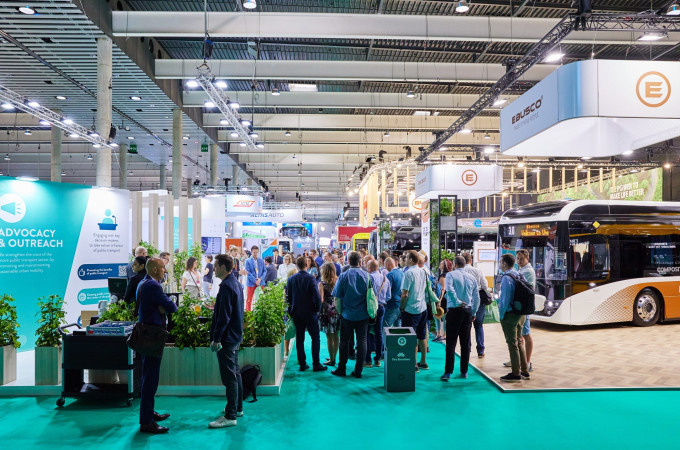
UITP 2025
Germany – Between 15–18 June, the Union Internationale des Transports Publics (UITP) held its biennial Global Public Transport Summit in Hamburg, Germany. With over 10,000 attendees and 401 exhibitors from 40 countries, the event showcased a transformative period for commercial vehicle technology, infrastructure and market strategy. From groundbreaking electric and hydrogen-powered buses to next-gen battery platforms, AI-enabled mobility, and innovative drivetrain technology, UITP 2025 underscored how commercial vehicle OEMs in the public transport space are accelerating toward a zero-emission, data-rich future.
The message from Mohamed Mezghani, Secretary General of UITP: “The age of clean, connected public transport is no longer on the horizon, it's here.”
This report provides a comprehensive overview of the show’s major themes across key categories, starting with vehicle debuts that made headlines across Europe and beyond.
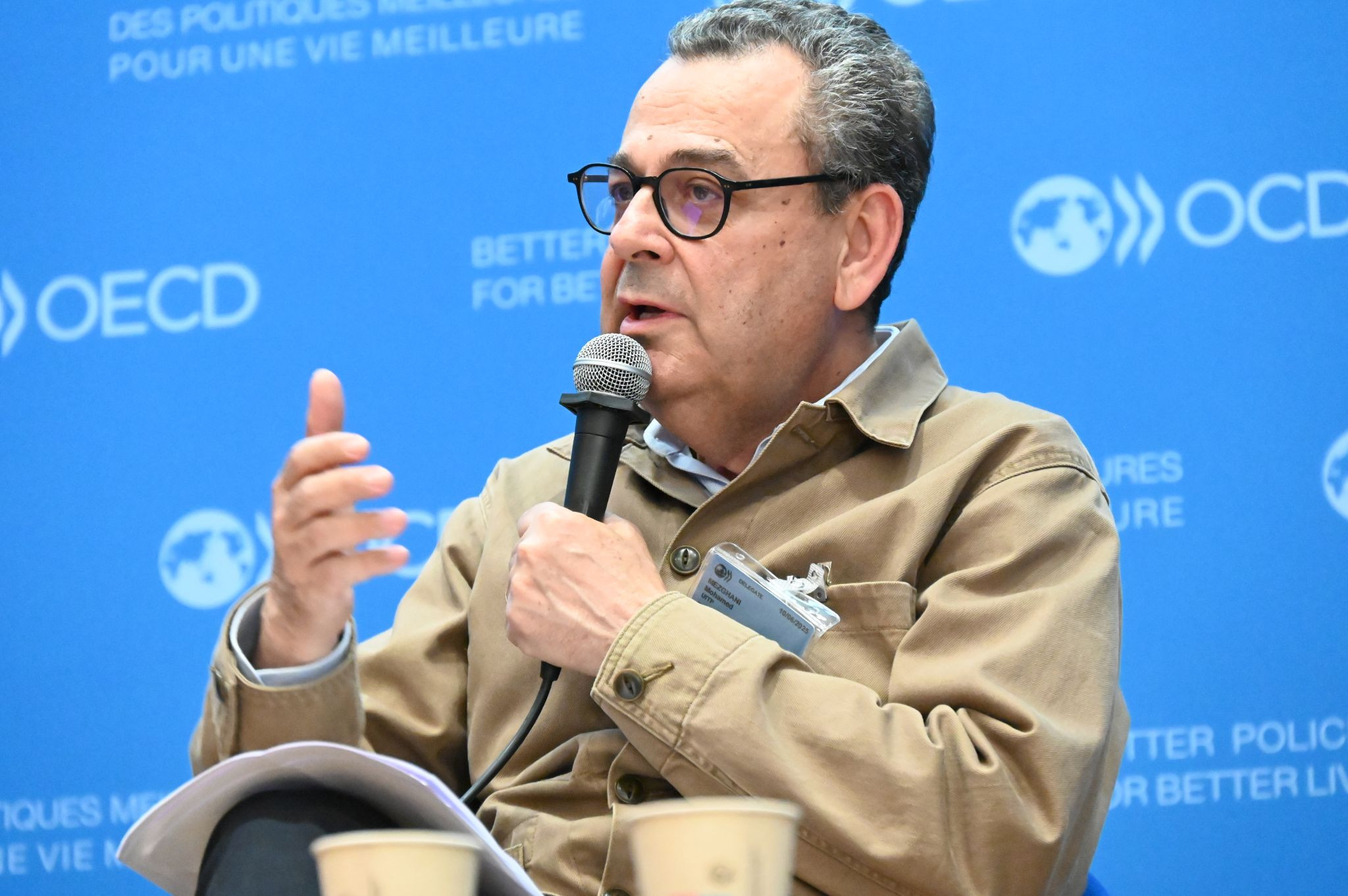
Mohamed Mezghani, Secretary General of UITP
Vehicle launches: EVs dominate the stage
Daimler Buses revealed the next-generation eCitaro, now powered by its fourth-generation NMC4 lithium-nickel-manganese-cobalt battery system, supplied by BMZ. This advanced pack delivers higher energy density and longer service life, supporting both 150 kW overnight and up to 300 kW fast charging. It will enter production in 2026 and reflects Daimler’s broader pivot toward digitalised e-mobility services. Through its new infrastructure arm, Daimler Buses Solutions GmbH, the OEM now offers fully integrated depot electrification, covering everything from battery storage and charging hardware to software-managed energy optimisation.
On its home turf, MAN Truck & Bus showcased its 2025 Lion’s City 10 E electric bus, ideal for narrow urban streets and challenging terrain. Equipped with modular battery packs assembled in-house at MAN’s Nuremberg plant, the roof-mounted system stores 356 kWh and supports two configurations: a “Maximum Range” option with up to 380 km per day, and a “Reliable Range” version optimised for lifecycle durability (~270 km). The vehicle runs on MAN’s proprietary central electric motor, delivering precise torque even on steep gradients. MAN also confirmed the development of a fully automated city bus by 2030.
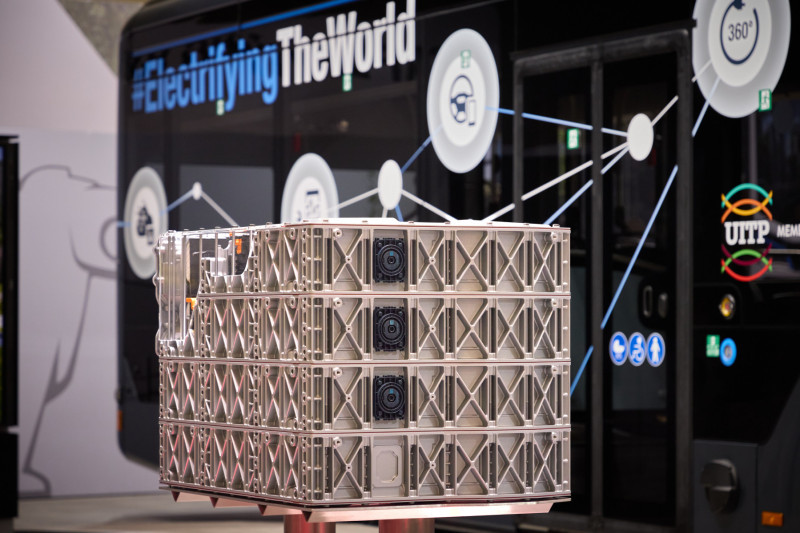
MAN battery pack in front of the Lion's City 10 E at UITP 2025
Making waves was BYD Europe with the launch of the B13.b, a 13.2-metre low-entry electric intercity bus designed specifically for long-distance regional routes. Its standout feature: a 560 kWh LFP Blade Battery Chassis that supports an astounding 700 km range. The system integrates the battery into the frame for reduced weight, improved cabin space, and enhanced structural integrity. Powered by dual 150 kW wheel-hub motors and controlled by BYD’s 6-in-1 SiC-based power controller, the bus is set for production at BYD’s Hungarian plant in Komárom.
Portugal’s CaetanoBus introduced its next-generation modular architecture, available in battery-electric (e.City Gold) and hydrogen fuel cell (H2.City Gold) variants. Models include 8.5m, 12m, and 18m (articulated and BRT) options. The buses incorporate CRRC’s 6-in-1 power module and CATL LFP battery packs ranging up to 700 kWh. Hydrogen versions feature Toyota’s 70 kW Gen 2.5 fuel cells, backed by supplementary CATL batteries for extended range. Francisco Magalhães, International Sales Manager, described the platform as a lightweight, high-efficiency solution with over 4,000 charge cycles and multi-market adaptability.
Indian manufacturer JBM Electric Vehicles entered the European market with the ECO-Life e12, a 12-metre LFP-powered city bus offering 400 km range, full ADAS compliance, and cybersecurity features aligned with EU GSR standards. It’s fitted with a 424 kWh battery, fast-charging capability, digital mirrors, and climate control. JBM also announced the opening of its European headquarters in Frankfurt, under the leadership of Daniel Fräde.
Turkish OEM Karsan launched its new eATA LE, a 12.2-metre low-entry electric bus positioned between urban and regional duty cycles. Equipped with a 528 kWh battery and ZF’s AxTrax electric axle, the eATA LE offers a 500 km range and accommodates up to 90 passengers. CEO Okan Baş told T&BB that the vehicle "fills the gap between long-distance urban lines and short intercity links, delivering sustainable, flexible service to mid-capacity corridors.”
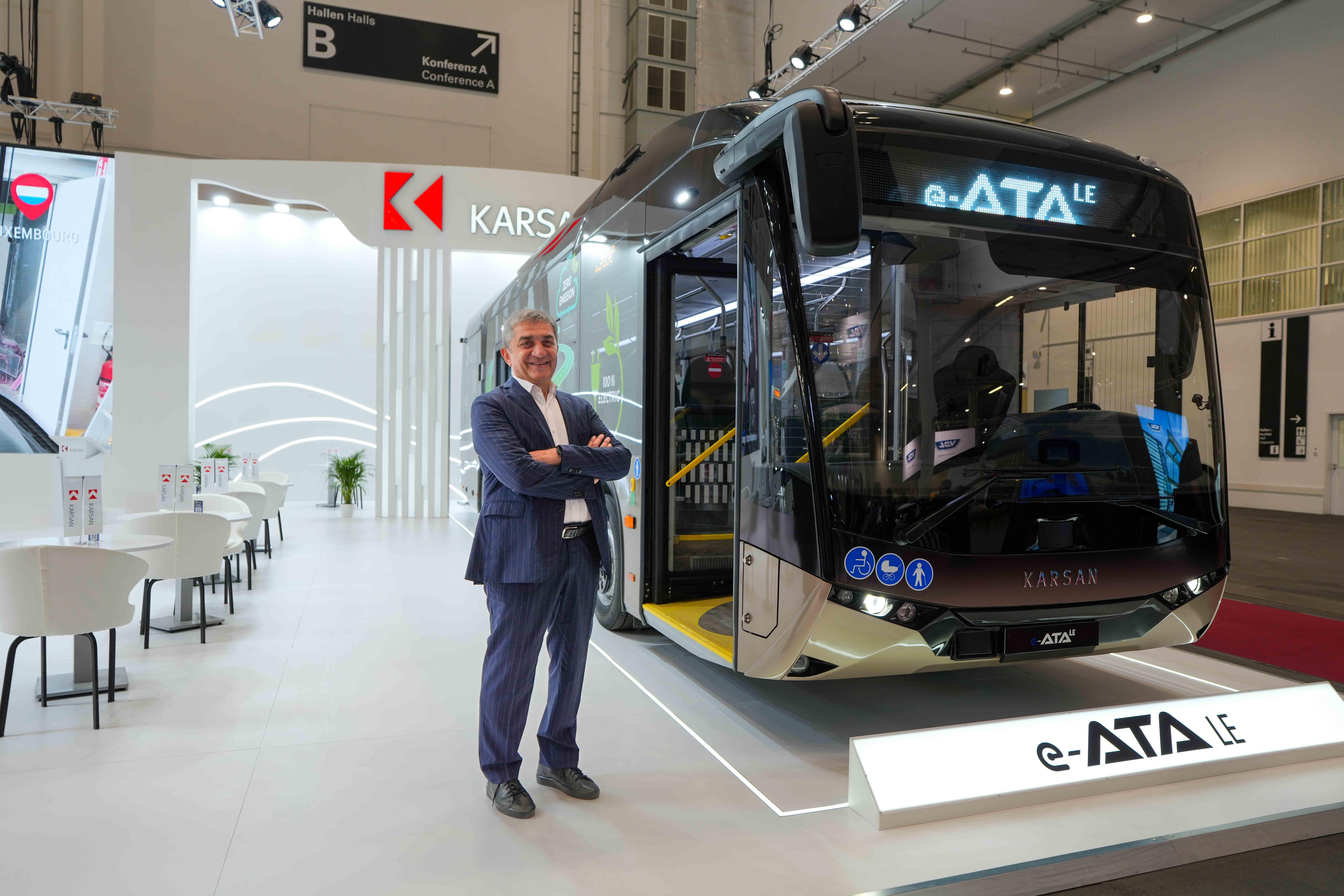
Karsan CEO Okan BAS next to the e-ATA LE
Making its UITP debut, Holon showcased the Holon Urban, a purpose-built electric shuttle designed for last-mile transit, campus fleets, and municipal ride-pooling. Fully electric and autonomous-ready, the Urban will enter pilot operation in Hamburg from August 2025, in collaboration with local operator Hamburger Hochbahn. Series production begins in 2026 at Holon’s new 500,000-sq.ft. facility in Jacksonville, Florida. The brand is a joint venture between Germany’s Benteler Group and Saudi Arabia’s Tasaru Mobility Investments.
Components & Systems
Italy’s Brist Axle Systems used UITP 2025 to present two key additions to its modular electric axle line-up: the eCEN175LE, designed for low-entry midibuses, and the eCEN225LF, aimed at heavier-duty low-floor city buses. Both systems feature high-efficiency 800V hairpin winding motors and are available with Brist’s in-house single- or two-speed transmissions. According to Managing Director Güngör Oduncu, the eCEN225LF’s optimised layout significantly reduces unsprung mass by up to 400 kg while offering full integration into the wheel arch, enabling a true low-floor configuration. Brist also confirmed it is expanding its axle technology into the speciality truck market, supplying steerable and non-steerable electric axles with independent suspension to an Italian refuse vehicle manufacturer. Oduncu said that these designs are now in demand for urban truck applications requiring compact, high-efficiency solutions.
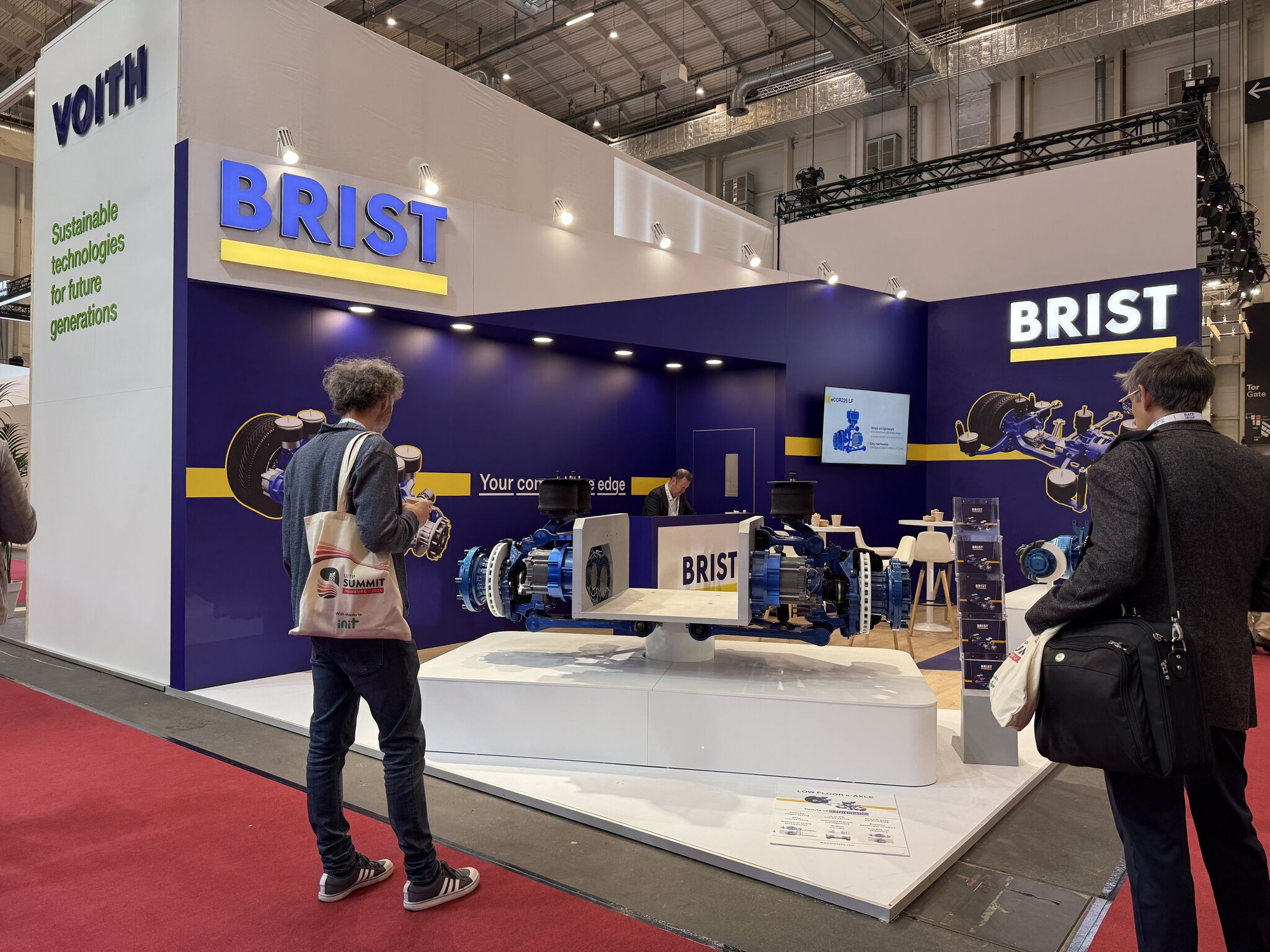
Brist UITP stand
Spanish access systems specialist Masats, a subsidiary of Irizar, showcased its new RE2b ramp system, which combines manual and electric operation and is now available for European orders. Designed for wide double-door entries, the RE2b offers improved accessibility for wheelchair users, integrating a visual passenger information system that glows green when deployed. Already in use on buses in Singapore, the ramp offers operators both redundancy and reliability while meeting evolving accessibility standards across international markets.
Business Developments
Turkey’s Anadolu Isuzu announced a major market entry into Saudi Arabia with a distributor agreement and a landmark CNG bus contract with Saudi Public Transport Company (SAPTCO). The company will deliver 50 Citiport 12-metre buses, produced at its Çayırova plant, starting in Q3 2025. This deal represents a breakthrough for the Turkish manufacturer in the Gulf region, which it views as a strategic growth market. Closer to home, Anadolu Isuzu also completed the delivery of 20 NovoCITI Life diesel midibuses to İzmir Metropolitan Municipality in Q1, equipped with ZF axles and FPT drivetrains, signalling robust growth.
Iveco Bus, meanwhile, arrived in Hamburg with several contract wins and a key partnership. The company announced a 100-unit order for 18-metre articulated E-Way electric buses from Belgian operator De Lijn, with deliveries set to begin in late 2026. It also confirmed the handover of 13 E-Way midibuses to EMT Malaga, part of a larger 19-vehicle deal, and noted a new contract win in the Azores, though specific vehicle numbers were not disclosed. The company also revealed a charging infrastructure partnership with ABB to develop high-power charging solutions for depot and opportunity charging. This initiative complements Iveco’s move toward vertical integration, including localised battery pack assembly by FPT Industrial at its Annonay plant in France, intended to shorten supply chains and accelerate rollout timelines across Europe.
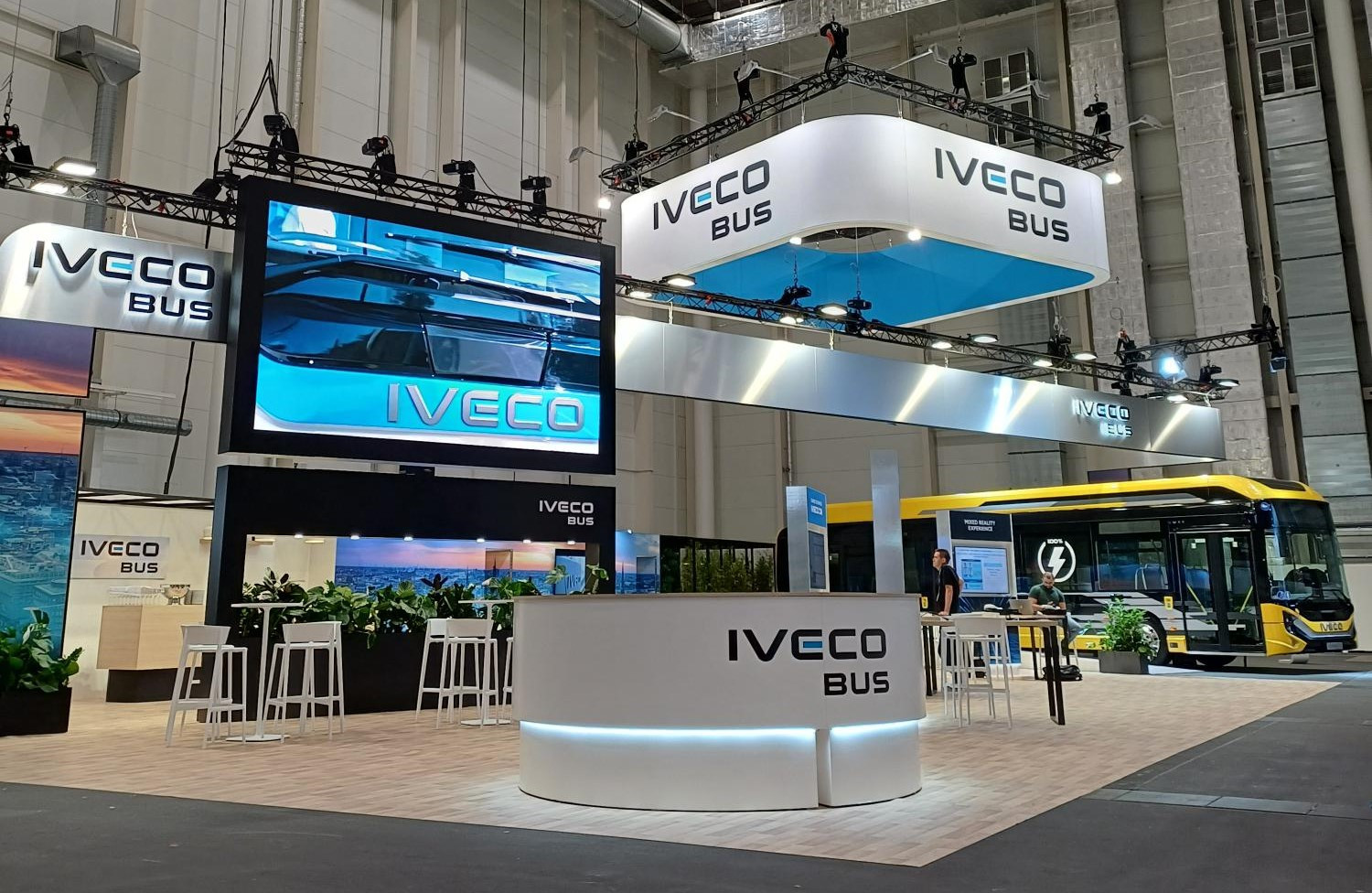
Iveco Bus stand at UITP 2025
Mergers & Acquisitions: The consolidation continues
Swiss automation and electrification giant ABB announced that it has acquired a 93% controlling stake in French power electronics specialist BrightLoop, a move that significantly enhances ABB’s capabilities in high-voltage DC/DC power conversion for heavy-duty e-mobility. BrightLoop’s “silicon carbide (SiC) and gallium nitride (GaN)-based converters are compact, bidirectional, and robust, tailored for demanding commercial vehicle applications including electric buses, marine systems, hydrogen platforms and aerospace.” The acquisition is set to close by Q3 2025 pending regulatory approval.
Following its acquisition by United Safety & Survivability Corporation late last year, Sweden’s Dafo Vehicle Fire Protection has consolidated its production activities in Stockholm, moving operations from Katrineholm as part of a wider reorganisation. On the product side, Dafo showcased a next-generation CO₂ sensor integrated into its EV fire suppression systems, developed in response to the unique fire risks posed by high-voltage batteries in electric buses. While no rebranding is planned, Dafo affirmed at the Show its focus on maintaining its leadership position in fire safety for zero-emission commercial vehicles.
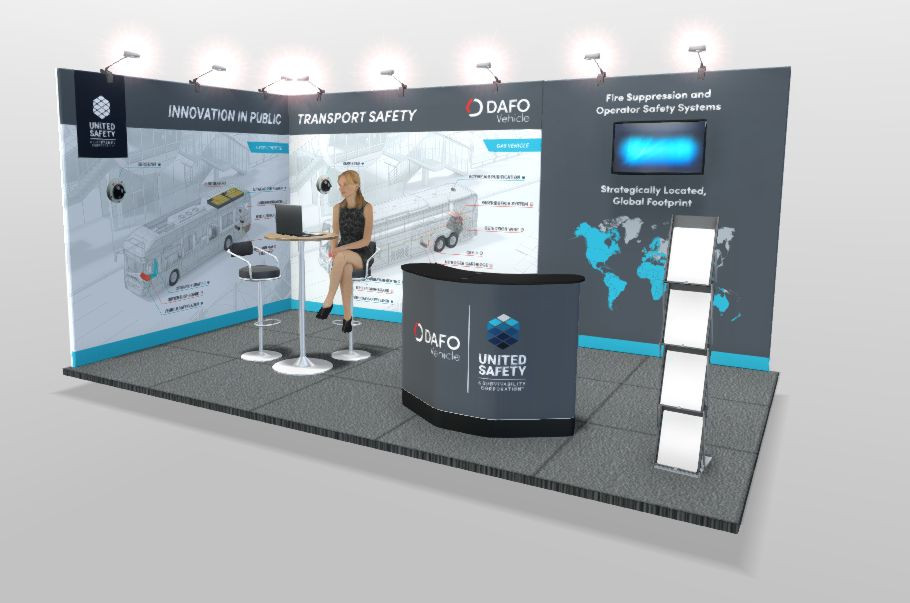
Dafo stand at UITP 2025
Key Takeaways: European competitiveness
Battery-electric buses are no longer an experiment; they are the market for both city and intercity operations. The technology has matured, the performance metrics align with operational needs, and the shift is well underway. Walking the show floor in Hamburg and having conversations with various executives during the exhibition, one trend stood out with undeniable clarity: battery innovation is accelerating at an impressive clip, to borrow a cricket phrase. OEMs showcased not only higher energy capacity (Daimler’s NMC4 lithium battery) batteries, but also smarter integration strategies (BYD’s Blade Battery Chassis) that combine battery function with vehicle structure, resulting in lighter weights and longer ranges.
Yet there’s a larger question looming over all this progress: What is the future of European battery and bus manufacturing in the face of overwhelming Chinese dominance? China currently leads in rare earth material processing, cell production, and increasingly, complete vehicle output. This is thanks, in large part, to low-cost coal-fired energy and massive economies of scale. While European battery suppliers are making headway, the gap is stark when compared to Chinese giants like CATL in terms of size and scale. This imbalance raises serious concerns for the competitiveness of European OEMs, especially in a region where high labour costs and soaring energy prices weigh heavily on production.
Germany, in particular, has struggled to stabilise its energy market amid its green transition, while Chinese manufacturers like BYD and Yutong continue to benefit from cheaper, carbon-intensive power. The result? Thousands of cost-efficient, high-quality buses rolling out of Chinese factories each year, many of which are now finding their way into the UK and wider European fleets, even in cases involving public subsidies! This raises a deeper, more existential question: Is the future of European bus manufacturing now in the hands of regulators? If policy doesn’t protect local industry, or at least level the playing field, can European OEMs truly compete on cost? Well, the short answer is no, but their saving grace has traditionally been the gulf in quality. This is shrinking by the year.
In response, many European manufacturers are pivoting toward value-added services and AI-powered platform ecosystems. The model is shifting, the European OEMS are no longer just bus makers, they are now “mobility solution providers.” Through bundled packages that include depot electrification, predictive maintenance, energy management, driver training, and battery recycling, European OEMs aim to lock operators into long-term, “turnkey contracts.” One industry executive put it succinctly: “The unit cost (bus) is constantly being pushed down thanks to the Chinese, so we need to juice the back-end.” This, of course, means using new revenue streams to maintain existing profit margins.
The question now isn't whether Europe can innovate; the evidence from UITP 2025 says it can. The real challenge is whether it can scale that innovation competitively in a global market that’s shifting faster than ever.
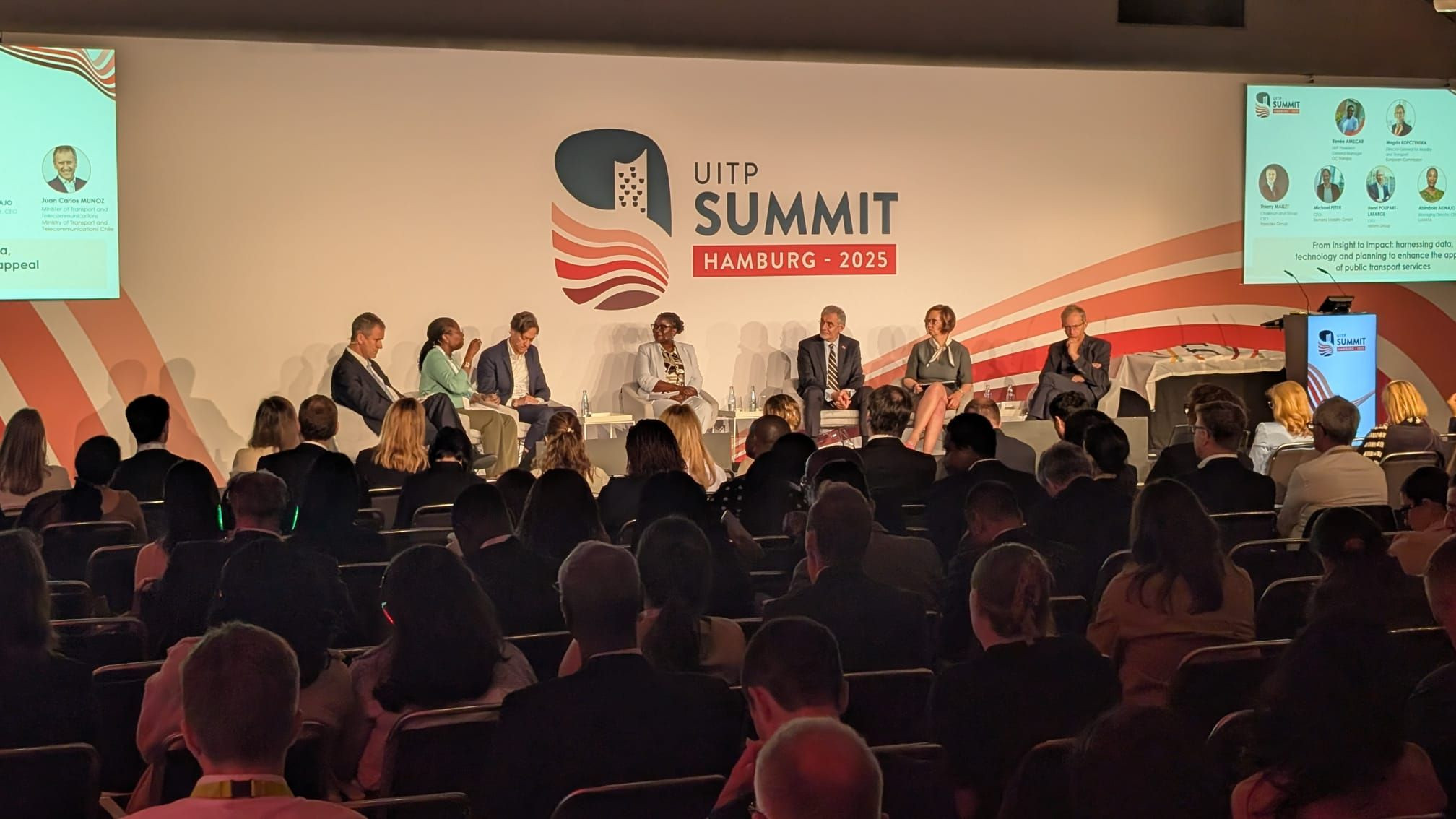
UITP conference hall



